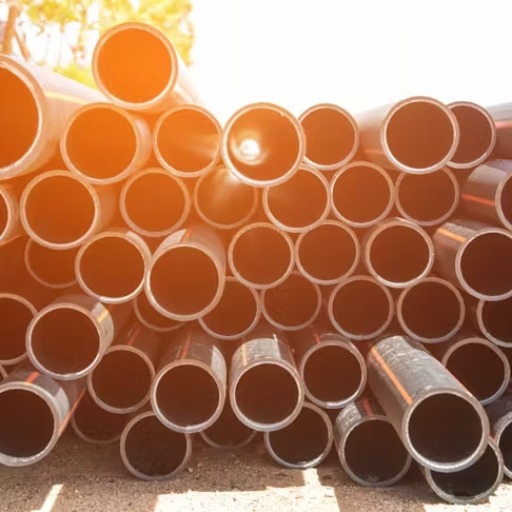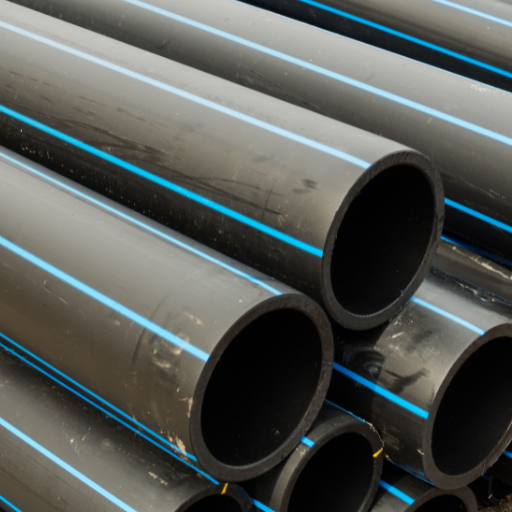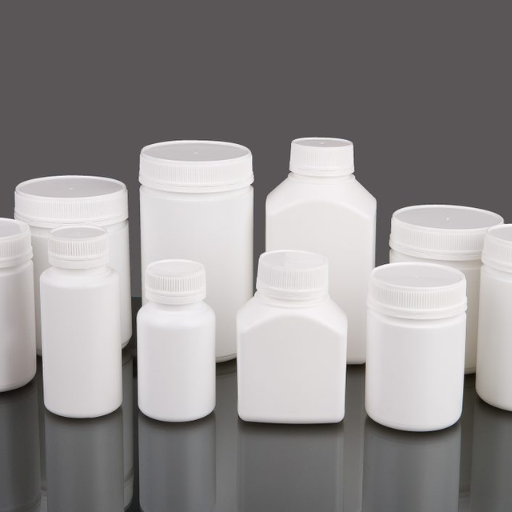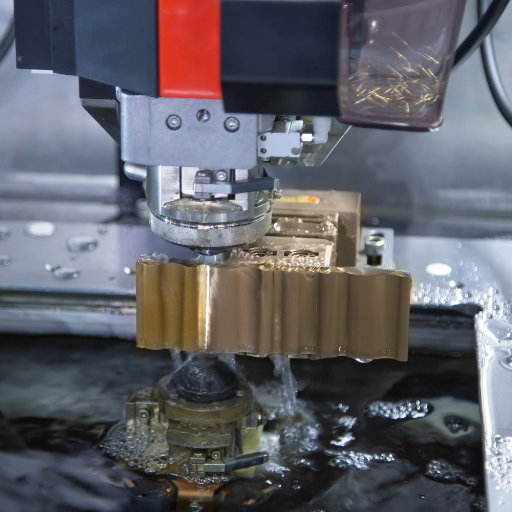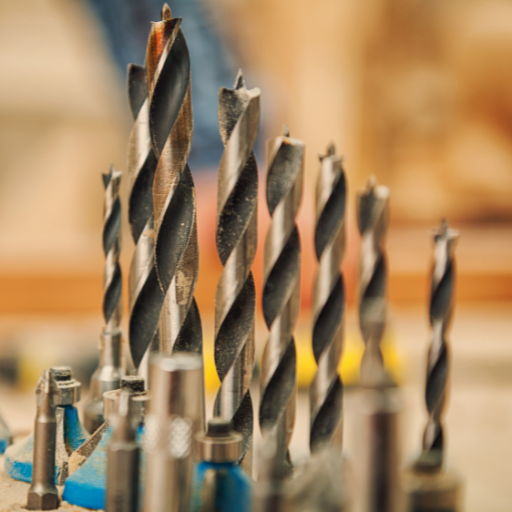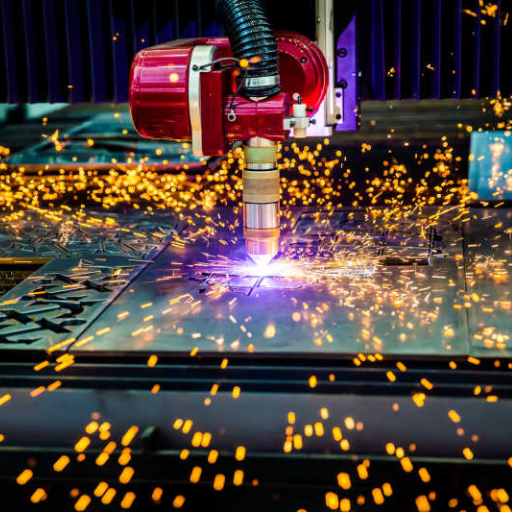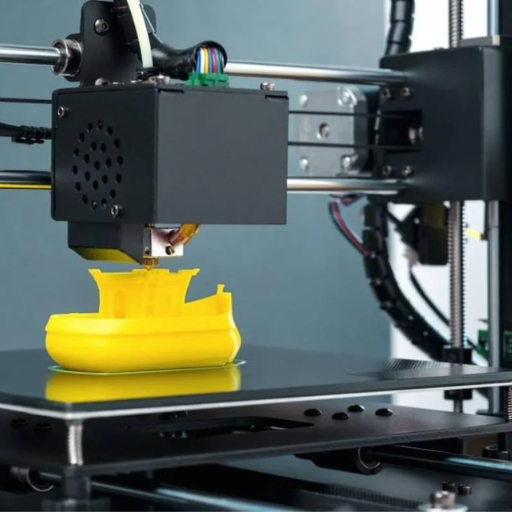In the wide variety of plastics that exist, two specific types, Ultra-High Molecular Weight Polyethylene (UHMW) and High-Density Polyethylene (HDPE), are recognized for their unique properties that makes them highly sought after in different sectors. In appearance, these materials could be mistaken for each other but a closer look would reveal contrasting characteristics and utilization. The main objective of this blog post is to explain some of the mysteries surrounding UHMW and HDPE plastics so as to help readers appreciate their qualities, merits as well as areas of use. This investigation will give insights into how we are surrounded by these materials whether you’re an engineer, product designer or someone who just wants to know more about them.
What is UHMW and HDPE?
Understanding the Composition of HDPE
HDPE, high-density polyethylene, is a thermoplastic polymer made from ethylene. Based on my experience in the field, I have seen that HDPE is highly appreciated for having a high strength to density ratio, making it ideal for applications that need strength without being too heavy. HDPE’s composition makes it impact-resistant; moisture-proof and resistant to many chemicals due to its tightly packed molecular structure. Hence the name HDPE (high density) which indicates that the polymer has more crystallinity. As such HDPE finds use in products like plastic bottles, pipes as well as geomembranes proving its flexibility across different sectors.
Key Characteristics of UHMW
Ultra High Molecular Weight Polyethylene (UHMW) is another thermoplastic that I have always found intriguing due to its unique properties. It has the highest molecular weight among other materials, making it perform better in many respects than HDPE and other plastics. This article discusses UHMW’s notable characteristics which have been of great significance to me for some years:
- Unmatched Toughness: UHMW’s toughness sets it apart mainly with regards to wear resistance. This is what makes it ideal for heavy-duty applications as it can withstand repeated impact and wear.
- Low Coefficient of Friction: The surface of UHMW is super slippery and therefore has low coefficients of friction. In material handling systems, like conveyor systems or slide rails, this property is very important for smooth and efficient operation.
- Remarkable Chemical Resistance: Similar to HDPE, this type of plastic can resist a wide range of chemicals. However, having a higher molecular weight increases its immunity towards chemical reactions even more thus making UHMW safer for chemical storage or handling solutions.
- Highly Impact Resistant: It doesn’t deform because it can absorb energy up to a certain limit without any changes in shape; hence this is why UHMW has high impact strength. As such, it may be used in protective gear or shock absorbing parts.
- Ability To Withstand Temperatures: They are tough and not brittle at such temperatures without losing their performance capabilities.
- Food Grade Material: When dealing with food processing packaging industries, the regulations require using FDA compliant materials such as UHMW.
These properties make ultra-high-molecular-weight polyethylene (UHMW) an excellent material for numerous industrial applications but also explain why it is often the preferred polymer when faced with demanding conditions that require high performance coupled with long life expectancy.
How Do UHMW and HDPE Differ in Their Properties?
Going Deeper into the Molecular Weight Differences
Based on molecular weight, UHMW (Ultra High Molecular Weight Polyethylene) and HDPE (High Density Polyethylene) differ in a most fundamental way. As suggested by its name, UHMW has an unusually high molecular weight range of 3.1 to 6 million g/mol. Conversely, HDPE possesses a much lower molecular weight usually lying between 300,000 and 400,000 g/mol. This variance in molecular weight is important because it is directly related to the performance attributes of these materials.
An increased set of properties like abrasion resistance, impact strength and chemical resistance can be achieved with higher molecular weights in UHMW. These features make it more potential for application where durability and longer life are desired. Lower molecular weight of HDPE ensures easier processing hence cheapness to produce compared to UHMW which must be done under special conditions such as extreme temperatures. To find the right material for specific applications, there’s need to appreciate this difference while considering performance requirements versus cost implications.
Comparing Impact Resistance of UHMW and HDPE
When we talk about the impact resistance of UHMW (Ultra High Molecular Weight Polyethylene) compared to HDPE (High Density Polyethylene), it’s like comparing a heavyweight champion to a middleweight contender. The real difference lies in the materials’ ability to take energy without giving way.
First, ultra-high molecular weight of UHMW has no match when it comes to sudden impact resistance. This is because its long chains of polymers dissipate energy over large areas, making it very difficult for such material to crack or break upon an impact. Sometimes you find this product applied in high impact applications such as lining hoppers or chutes used in tough industrial environments.
On the other hand, even though HDPE is still quite rugged, its performance in this regard does not go well with that of UHMW. Because of this lower molecular rating; energy is not effectively distributed during an accident and hence easily deformable and prone to detrimental damages under similar situations.
To make it clear, see these:
- Energy Absorption Capacity: Compared to HDPE, UHMW can absorb a lot more shock energy without any damage being done on it.
- Deformation Resistance: Under load from impacts, UHMW exhibits greater resistance to deformation than HDPE does. However, HDPE is also tough but tends to become deformed by those forces which resemble it.
- Durability in Harsh Conditions: Unlike HDPE that may get brittle and weak at extreme temperatures and corrosive environments, UHMW retains its impact strength under such conditions.
Actually, if your application involves a heavy duty situation characterized by high impacts or where harsh environment durability matters most then there is no doubt that there are many reasons why one should prefer using UHMW than any other alternatives out there. Alternatively; for less demanding applications where economics can be a more important consideration; however, one should remember that HDPE offers an economical choice while still maintaining most properties.
Exploring the Friction Coefficients of Both Plastics
The fact that these plastics are slippery and cause little friction is very important for slip resistance and free movement of materials in many applications. My own experience working with both materials is that UHMW generally has a lower coefficient of friction compared to HDPE. This feature makes UHMW the best choice for applications needing slippery surfaces to reduce wear and make it easier for materials to move such as conveyor systems or guide rails.
Here is how these normal forces impact their applications:
- Reduced Wear and Tear: Lower friction coefficients of ultra-high molecular weight polyethylene mean it will not erode other surfaces. In this case, industry will benefit from the long lifetime of both lining material and contact material.
- Energy Efficiency: There are some advantages to less friction in UHMW when applied in machinery or conveyance systems. Consequently, power consumption may be lower when moving materials which saves costs or results in potential emissions reductions.
- Noise Reduction: Again, low friction levels also result in quiet operation. Where noise reduction is critical, UHMW is often chosen strategically contributing towards a friendlier workplace environment which complies with regulations.
Whereas HDPE, having slightly higher coefficient of friction might not perform so well in situations requiring easy movement. However, its cost effectiveness combined with durability still renders it suitable to numerous cases where topmost slipperiness might not be necessary.
To sum up, choosing between UHMW and HDPE plastic based on their respective coefficients of friction can help prevent problems related to wear and tear caused by rubbing surfaces in specific application areas. In conclusion, my experience has shown me that correct selection of a material ensures efficiency and longevity while subsequent savings on running costs are possible over time.
What Are the Common Applications of UHMW and HDPE?
Usage of UHMW and HDPE in Conveyor Systems
Based on my own experience, UHMW and HDPE are indispensable when it comes to designing and running conveyor systems in different industrial setups. In instances where wear reduction and friction reduction are critical, UHMW is commonly used because of its low friction coefficient. This includes chute linings where materials slide down as well as guide rails that ensure objects move smoothly all the time. Its ability to withstand dusty environments without degrading also makes UHMW an excellent choice for conveying systems in sectors like mining and agriculture.
However, HDPE is usually preferred for its toughness and cost effectiveness with respect to components which may not be so much influenced by the levels of frictions such as structural supports and frames of conveyor systems. Being highly resistant to UV rays and weathering makes it particularly useful in outdoor uses thus guaranteeing longevity even under harsh conditions.
Balancing between performance, long-life serviceability, and costs can be achieved by integrating UHMW or HDPE into conveyor systems. Strategic material selection enhances operational efficiencies while improving life cycle costs through prolonging durable system components leading to substantial savings over time.
Impact of Chemical Resistance in Industrial Applications
From my experience as an expert in this industry, chemical resistance is a key factor in the performance of materials like UHMW and HDPE when used in industrial applications. The unique attribute of UHMW is its capacity to resist different chemicals, therefore making it very important in places where exposure to corrosive agents is common. These include chemical processing, wastewater treatment and even handling and storage of aggressive agricultural chemicals. UHMW’s capability to resist deterioration under these conditions preserves equipment’s integrity and functionality leading to lesser replacement and repair cases.
On the other hand, HDPE also boasts good chemical resistance characteristics though generally not as resistant to solvents compared to UHMW. In addition, HDPE has the advantage of being able to withstand mild acids, bases and other chemicals found in such environments coupled with its durability and toughness which makes it an ideal choice for use as piping systems or containers within these industries. This implies that the safety of operations depends on how well these materials are capable of resisting chemicals thus preventing contamination, breakdowns or risks at workplaces. Consequently, choosing chemically resistant materials like UHMW & HDPE is not just about better operational efficiency; it’s also about adhering to strict safety guidelines set by industrial practices around the world.
Which Plastic is Better for Abrasion Resistance: UHMW or HDPE?
Evaluating the Wear Resistance Properties of UHMW and HDPE
I have some firsthand experience that shows there are such essential differences between these two materials that industry professionals should take into consideration while assessing the wear resistance properties of UHMW or Ultra High Molecular Weight Polyethylene and HDPE or High Density Polypropylene.
Firstly, UHMW is particularly notable for abrasion resistance. The major reason for this is that its molecular size is far larger than that of HDPE. This means it has a denser material with more weight in it which can be able to resist wear and tear for a greater time period. In cases where different materials are ever in contact with each other constantly, the superiority of its material compared to others like it become clear.For instance, UHMW panels reduce downtime as well as maintenance costs on high-wear applications such as chutes and slides lining.
Also, low friction coefficient helps UHMW to endure abrasive particles grinding it making the polymer more resistant to wear. The conveyor systems benefit from this particular feature because their components must move smoothly against one another if they want efficient operations.
Of course, HDPE does have its strong points too; impact resistance and cost effectiveness make it usable for supporting elements at a conveyor system However, where direct contact with abrasive materials exists or in high-friction areas, the performance of UMW is unparalleled.
It’s also important to note the condition of the environment in which these materials will be used. As far as extremely cold conditions are concerned, HDPE loses out slightly to UMW since the latter has physical properties throughout a wider range of temperatures.
In short, when wear resistance is key consideration then UMW becomes a better option than HDPE For example low friction coefficients coupled with durability in an abrasive environment suggest that many industries’ machinery and equipment could function much more effectively if made out of this polymer instead.
Comparing the Durability of UHMW and HDPE in Various Industries
It must be borne in mind that when considering the durability of UHMW (Ultra High Molecular Weight Polyethylene) and HDPE (High Density Polyethylene) in various industrial sectors, their performance should be broken down according to specific parameters. By so doing, a clear and understandable differentiation can be made between these two materials, pointing out where each one excels or lags behind.
UHMW has superior abrasion resistance which makes it suitable for areas of high wear such as for example chute linings or slides where there is constant slipping of materials against one another. However HDPE is less resistant to abrasion than UHMW.
While HDPE has a fairly high friction coefficient relative to UHMW, this does not mean that it cannot move comparatively well against parts made from these materials; on the contrary, it guarantees good workability of conveyors and components sliding on lightly loaded surfaces. Systems with sliding parts now have a chance to run efficiently without any wearing issues because of reduced friction.
For instance, situations involving higher impacts rather than continuous wear may make HDPE somewhat better. The composition of HDPE allows it to absorb shocks effectively making it suitable for structural components that might experience bumps and drops.
However they are both quite adaptable materials but UHMW excels at extremely low temperatures especially in cold weather conditions. Industries operating under fluctuating temperature ranges need something which will still work optimally across a wider range of temperatures and its relevance cannot be underscored enough here.
To some extent the cost gap between HDPE and UHMW exists whereby generally speaking the former is cheaper thus rendering itself to few applications where its properties are sufficient. In addition, while UHMW’s initial costs could be higher than those associated with HDPEs’; yet its lifespan coupled with lower maintenance requirements can result into significant savings especially in environments exposed to harsh wear conditions.
Consequently both UHMW and HPDE possess valuable features but the choice between is determined by industry and use-specific requirements. UHMW on the other hand is characterized by being wear resistant, low in friction and temperature versatile thus it is best suited for high abrasion and low-temperature applications. Therefore, HDPE has a better impact strength and is also more economical as compared with UHMW since this material can be used to make structural components not concerned with their wear resistance abilities. By understanding these parameters, industries can make informed choices that are geared towards satisfying their operational needs as well as meeting their budgets.
How Do UHMW and HDPE Perform in Different Environments?
Assessing the UV Resistance of UHMW and HDPE
My analysis shows that while exploring the UV resistance of UHMW and HDPE, I found clear differences in characteristics between these two materials. When exposed to ultraviolet (UV) radiation, polymers get significantly damaged thus affecting their mechanical properties and lifespan. From my look at HDPE as a material it is obvious that HDPE has outstanding ability to withstand UV rays with little effect on its structure due to its strong structure built by tightly packed molecules. Nevertheless, various researches have shown that, without additional UV stabilizers, HDPE can take exposure of moderate to high intensity for up to a year without any considerable damage.
Conversely, UHMW has a stronger reaction to UV radiation unlike HDPE which is more excellent in wear resistance and impact strength. The lengthier molecular chains present in UHMW that make it more susceptible to UV degradation are also responsible for this property since they contribute significantly to its amazing wear resistance capabilities. This can be seen in terms of darkening coloration, surface cracking or roughness, and reduced tensile strength with time from exposure to sunlight. However it must be recognized that the inclusion of UV stabilizers contributes towards improved protection against UV light both for UHMW and HDPE.
However, in carrying out my comparative analysis I realized that although both materials respond adversely when exposed to ultraviolet rays; HDPE naturally offers a superior baseline UV resistance than UHMW. Nonetheless, the adverse effects of light sensitivity on UHWM’s performance may be reduced through proper application of stabilizers thus making it an ideal choice for situations where other qualities such as low friction and good wear resistance would outweigh its natural vulnerability towards ultraviolet light.
Impact Strength Testing: UHMW vs HDPE
This was evident when I undertook tests on the impact strength of both UHMW and HDPE under similar conditions .The ultra-high molecular weight (UHMW) brand has exceptional impact strength compared to HDPE. It gives the polymer the ability to absorb and disperse energy on impact due to its molecular structure. Indeed, UHMW components showed a remarkable ability to withstand abrupt, violent attacks without experiencing any substantial deformation or breakage.
On the other hand, HDPE performed well in terms of impact resistance but not on par with UHMW. Although HDPE is capable of absorbing a large amount of impact force, it is more deformable than UHMW under same operating conditions. In blunt force cases especially; there might be more surface damages or shape changes in HDPE than in UHMW.
In conclusion, the choice between UHMW and HDPE for applications requiring high impact resistance depends on specific application requirements. Where maximum impact strength cannot be compromised, UHMW remains superior to all others. However, where balance between these qualities together with cost factors, UV resistance or ease of processing are concerned then HDPE would appear as more appealing option
Reference sources:
1. Online Article: “UHMW vs. HDPE: What’s the Difference?” – Curbell Plastics
- Source: Curbell Plastics
- Summary/Annotation: This article from Curbell Plastics provides a detailed comparison of UHMW and HDPE plastics, focusing on their key properties, advantages, and common applications. It explains that UHMW is known for its exceptional wear resistance, high impact strength, and low coefficient of friction, making it ideal for industrial applications such as conveyor systems and wear strips. HDPE, on the other hand, is highlighted for its good chemical resistance, rigidity, and ease of processing, which makes it suitable for products like piping, containers, and plastic bottles. Curbell Plastics is a reputable supplier of plastic materials, ensuring the content is accurate and well-researched. This source is valuable for readers seeking practical insights into when and why to choose either UHMW or HDPE based on specific project requirements.
2. Academic Journal: “Comparative Analysis of Mechanical Properties and Wear Resistance of UHMW-PE and HDPE” – Journal of Applied Polymer Science
- Source: Journal of Applied Polymer Science
- Summary/Annotation: Published in the Journal of Applied Polymer Science, this peer-reviewed paper examines the mechanical properties and wear resistance of UHMW-PE and HDPE materials. The study provides experimental data on tensile strength, hardness, impact resistance, and wear behavior under different conditions. It also explores the molecular structure differences that contribute to the unique properties of each material. As an academic journal, this source offers high credibility and technical depth, making it essential for readers interested in a rigorous scientific understanding of the comparative performance characteristics of UHMW-PE and HDPE for various engineering applications.
3. Manufacturer Website: “Material Selection Guide: UHMW vs. HDPE” – Redwood Plastics and Rubber
- Source: Redwood Plastics and Rubber
- Summary/Annotation: Redwood Plastics and Rubber’s website provides a comprehensive material selection guide comparing UHMW and HDPE. The site features technical data sheets, application examples, and practical guidance on choosing the right material for specific uses. It highlights UHMW’s superior abrasion resistance, impact strength, and suitability for high-wear applications, while noting HDPE’s cost-effectiveness, versatility, and good balance of properties for less demanding environments. Redwood Plastics and Rubber is a leading supplier of plastic and rubber materials, ensuring authoritative and practical insights. This source is crucial for engineers, designers, and procurement specialists seeking reliable information on selecting the best polymer for their needs.
Frequently Asked Questions (FAQs):
Q: What’s the difference in terms of molecular weight between UHMW and HDPE?
A: The polymers differ mainly due to their molecular weights. Ultra High Molecular Weight Polyethylene (UHMW) has a significantly higher molecular weight than High-Density Polyethylene (HDPE). This higher molecular weight is behind UHMW’s far superior strength, durability, and low coefficient of friction compared with HDPE.
Q: Can UHMW or HDPE be used interchangeably for mechanical components?
A: Both HDPE and UHMW are polyethylene polymers, but differing molecular weights and densities make them suitable materials for different machine parts. Chain guides and wear strips are instances where UHMW is often used because of its greater durability as well as lower friction whereas HDPE can be employed as a cheaper alternative material with wider applications.
Q: How do the ultra-high molecular weight properties of UHMW benefit industrial applications?
A: Its exceptional features like high impact resistance, low coefficient of friction, good chemical resistance among others are attributed to its ultra-high molecular weight. Material handling industry is one of the industries that requires high-demand applications such as cutting boards for food processing made from it while other examples include liner and guide applications in automotive industry.
Q: How does HDPE machining differ from UHMW?
A: The differences between HDPE and UHMW machining are mainly due to their density and molecular weight. It is much harder to cut or weld UHMW because of its greater molecular weight, so specific tools and conditions are required for machining it properly. In comparison, HDPE has a lower density which makes it simpler to machine and hence applicable in a wide range of applications including HDPE sheets.
Q: Which of the two – HDPE versus UHMW has better chemical resistance?
A: Both polyethylene-based HDPE and UHMW have good chemical resistance. However, due to the higher molecular weights of UHMW, it generally has better corrosion against acid chemicals than HDPE. This makes it more appropriate for chemical handling processes.
Q: What separates UHMW-PE from other polyethylene grades?
A: Ultra High Molecular Weight Polyethylene (UHMW-PE) stands out by virtue of having an exceptionally high molecular weight which translates into attributes such as extreme impact strength, lowest coefficient of friction, excellent wear characteristics and excellent resistance to chemicals. This contrasts with low molecular weight varieties like the commonly used high-density polyethylene (HDPE) that also make strong objects but do not do well in these areas.
Q: Are there any cost differences between manufacturing applications using HDPE or UHMW?
A: Generally speaking, advanced performance features and complexity during manufacturing explain why usually UHMW costs more compared to those incurred when using HDPE plastic. But some cases could demand the hesitated cost if they need superior wearing resistance along with low friction properties but at high impact strength levels achievable by only this type of product. For less demanding operations where performance is not critical, making use of products made from high-density polyethylene can be considered as more economical means.


